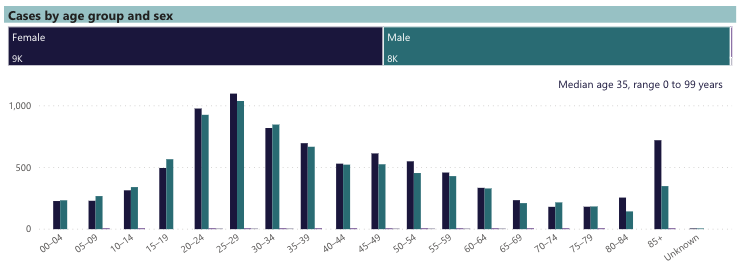The 'brilliant' move from Victoria to halt global virus problem
Victoria has recorded four consecutive days of daily coronavirus cases below 300 for the first time in over a month, indicating Stage 4 restrictions across Melbourne are finally beginning to drive down infections.
In what is Australia’s most stringent lockdown yet, Melburnians’ movement has been severely restricted for six weeks as Victoria looks to get to grips with its second wave.
Among the restrictions is the city’s first ever widespread curfew, prohibiting any of its five million residents from leaving their homes without exemption between the hours of 8pm and 5am.
Police Minister Lisa Neville at the time described the restrictions as “extraordinary powers for an extraordinary time”.
Professor Mary-Louise McLaws, a World Health Organisation advisor and epidemiologist at the University of NSW, has hailed the curfew for targeting those most active in the community, highlighting it as one of the key reasons numbers have begun to drop.

“The curfew was brilliant because [young people] are a highly mobile, social group,” she told Yahoo News Australia.
“But they’re also underemployed and working across several workplaces and probably do go out to socialise.”
“They’ve got a lot of friends, a lot of connections and that increases the transmission.”
Victorian data backs such a move to target the specific demographic highlighted by Prof McLaws which has become one of the biggest drivers of Victoria’s alarming second wave.
As of Tuesday, 4,043 of the state’s 17,238 cumulative cases were people aged between 20 and 29, 23 per cent of all cases.
Widening the age bracket to 20 to 39, there have been 7,076 cases recorded, 41 per cent of all cases.

WHO warns young people are ‘driving the spread’
WHO officials have ramped up their warning of the growing proportion of younger people among new infections globally.
"The epidemic is changing," WHO Western Pacific regional director, Takeshi Kasai, told a virtual briefing on Tuesday.
"People in their 20s, 30s and 40s are increasingly driving the spread. Many are unaware they are infected.
"This increases the risk of spillovers to the more vulnerable.”
On Monday, Italy closed all nightclubs and made masks compulsory in busy areas during the evening.
The worst-hit by the virus in Victoria in the second wave has been the private aged care sector, with more than 2,000 active cases linked to aged care homes on Wednesday.
The 12 new deaths on Wednesday were all in aged care, while the majority of the 363 coronavirus deaths in Victoria’s second wave have been aged-care residents.
While Victoria Premier Daniel Andrews said further breakdown of data would be released this week, more than 1000 aged care workers in Victoria have contracted the virus.
And while information on where they contracted the virus is still being sought, Mr Andrews said the majority of healthcare workers had contracted the virus outside of the workplace.
Do you have a story tip? Email: newsroomau@yahoonews.com.
You can also follow us on Facebook, Instagram and Twitter and download the Yahoo News app from the App Store or Google Play.



